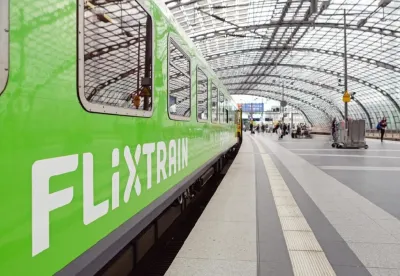In the past few years, rail and metro operators have embarked on an aggressive campaign to develop new levels of interaction and engagement with their passengers using social media. Twitter leads the pack as the preferred social media platform for train companies interested in communicating with their passengers. This can be attributed to the fact that Twitter is currently the fastest growing social media platform today. It also offers immediacy and intimacy that can’t be matched by any other social media platform.
Fast Information for Passengers
According to Tim Healey, the Sound Transit creative and marketing services director, Twitter is the ultimate platform for engaging with Sound Transit riders because most of them use the social media platform. It was therefore up to Sound Transit to decide to join other rail and transit operators in embracing the social media platform or stand a chance of being left on the sidelines. Sound Transit chose to join because the company believes in being part of the conversation i.e. conversing and engaging with customers on their favorite social media platform.
France’s national railway company, Voyages-sncf.com, hasn’t been left behind. Their focus is more on sales. Their agenda is to use social media as a means as opposed to a goal. The company strives to give its passengers relevant and reliable information to help turn would-be passengers into actual passengers.
However, among all the rail and transit operators on social media, Amtrak leads the pack with the strongest social media presence. As of 10th March 2014, the American rail and transit giant boasted of having over 390,000 likes on Facebook and over 72,000 followers on Twitter with 85,000 tweets. Amtrak’s had over 1.6 million views on YouTube which is impressive considering the company made a debut into social media a few years ago. Amtrak’s first tweet was in March 2010. It is a perfect example of a rail and transit operator which is fully utilizing social media in a brand building and information perspective.
The Benefits of Twitter
Regardless of the type of engagement rail and transit operators have with their customers, they stand to enjoy a number of benefits. These benefits include deepening relationships with passengers, making passengers brand advocates, defusing potential complaints and ensuring passengers feel positive about the entire experience.
The above outcomes manifest themselves via Twitter output coming from rail and metro companies communicating in two main areas namely travel updates (including details on alterations and disruptions of service) and promotion and offers (aimed at driving up revenue, engaging passengers or gathering data.
The company Via Rail is aware of the opportunities social media platforms like Twitter offers passengers as well as other rail and transit stakeholders like operators and partners. According to Mohammed Bhanji, the marketing technology director for Via Rail in Canada, social media plays a very important role in their marketing strategy. Bhanji believes social media must be fully integrated into the company’s customer service and marketing teams as well as all the company’s partnerships.
Hearing Passengers’ Problems
New opportunities always attract new challenges. According to most rail and transit operators on Twitter, passengers usually flag operator accounts when reporting problems or making enquiries. This in turn makes it very difficult to track information and respond appropriately. For most passengers, Twitter is the first venue for venting frustration in case there are any problems with rail and transit routes.
There is also the challenge of dealing with negative feedback or tweets. It can be a daunting task trying to find the right tone to respond to negative comments/posts. Hitting this balance is crucial for rail and metro operators. It can also be a challenge trying to offer relevant information to users to ensure the passengers feel their complaints are being taken seriously.
Rail and metro operators also face the challenge of convincing their customers to follow them. This requires total commitment to developing engaging content that potential riders and actual passengers need or want. This isn't easy since most transit agencies already face financial constraints in their primary line of business. Considering customers won’t tolerate any information delivery delays in the future, rail and transit operators have the hard task of developing effective information delivery systems.











